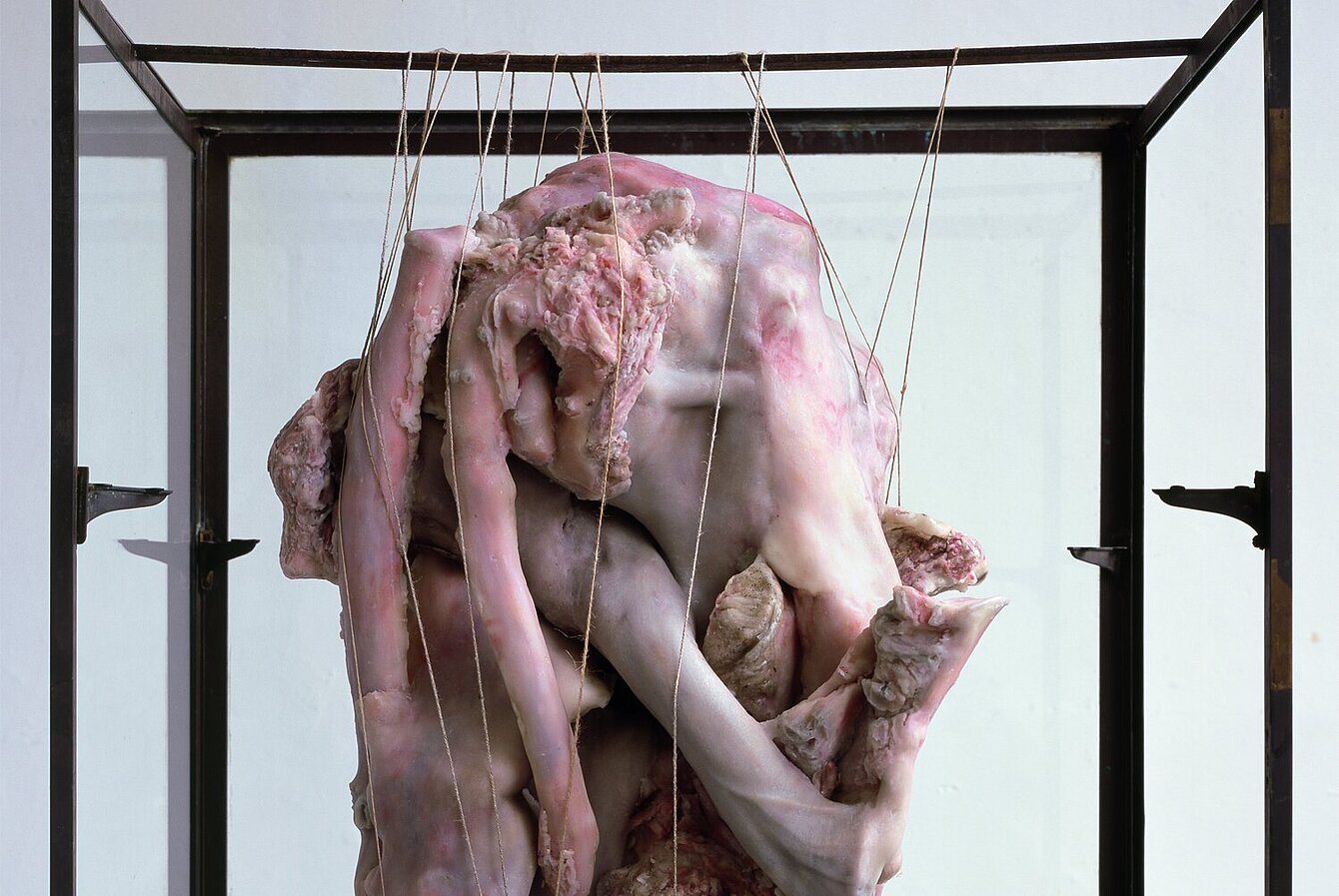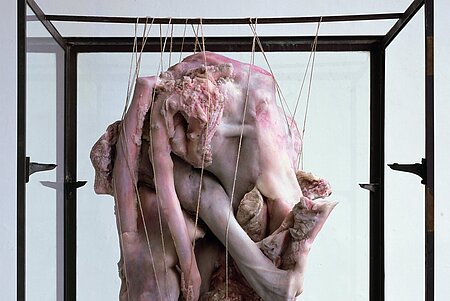Biomorphism represents transformation and fluidity, evolution from one state to the next. It is governed by processes operating on fundamentals, determining all works in different ways. Etymologically derived from the Greek words bios (mode of life) and morphé (form), the term seems to have come into use in the 1930s, when it described the visual style of the Surrealists. The artists in the present exhibition follow the same tradition, sharing an interest in (and drawing their visionary creatures from) the archaic and fundamental. An odd accumulation of magic realism is the result that creates myths and triggers off discussion about mankind's manipulation of organic tissue.
With works by Ruth Asawa (US), Louise Bourgeois (FR/US), Berlinde de Bruyckere (BE), Lee Bul (KR), Wolfgang Flad (DE), Gabríela Friðriksdóttir (IS), Siobhán Hapaska (UK), Julie Hayward (AT), Georg Herold (DE), Agnieszka Kalinowska (PL), Liz Larner (US), Ernesto Neto (BR), Carsten Nicolai (DE), Pino Pascali (IT), Jill Spector (US), eva helene stern*** (DE/AT), Franz West (AT), Xiao Yu (CN), Xu Zhen (CN).
Particularly Berlinde de Bruyckere's fragmented Laocoön, Louise Bourgeois's embryonic exhibit, Georg Herold's paraphrase of faith in science and Xiao Yu's shocking fabulous flesh creature go directly and corporeally to extremes, opening up a debate on topical subjects such as genetic manipulation, cloning and research into the creation of artificial life. Lee Bul's over-artificial winged creature gropes similarly towards biomorphism. In a dialogue between a Frankenstein sci-fi monster and a mystic creature, Transcription (Drift & Scatter) is also reminiscent of the celebrated Nike of Samothrace. Wolfgang Flad sets up a rather ironic link with art history in making his bone sculptures in an unusual arrangement of constellations from pulped art books, meantime evoking parts of the body that are fortunately rarely visible but familiar to everyone. The works of Gabríela Friðriksdóttir oscillate between waking and sleeping, the worlds of travel drawn from the imagination and plunging into a warm spot smelling of fresh hay. Julie Hayward also speaks with the language of the unconscious, and like Siobhán Hapaska creates forms in the vein of utopian 60s' design. In the ur-forms of eva helene stern*** (a Grazer by adoption), American artist Ruth Asawa and Brazilian Ernesto Neto, whose works are about metamorphosis itself and growth and decay, we are taken back to the origins, to cells and condensates. Neto's outsize objects are sensory objects of self-experience and, like the works of Agnieszka Kalinowska, Liz Larner and Xu Zhen, open up sculptural space to bring in the biomorphic architecture of the Kunsthaus Graz itself. Franz West's psychotic distortion is a form of metamorphosis constantly disowning itself in irony, though like Pino Pascali and Jill Spector it does not lose its touch of oppressive menace. Carsten Nicolai's cluster moves at the interface of science and art, making it clear - though not even here without an undertone of ironic doubt - how art can help us understand complex three-dimensional phenomena better.
A catalogue accompanies the exhibition. It contains numerous images and text contributions by Katrin Bucher Trantow, Thomas Macho, Gloria Meynen und Peter Pakesch.





















